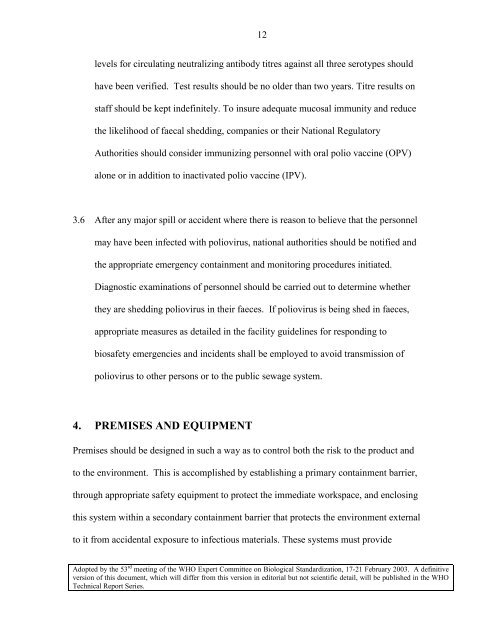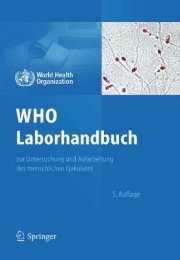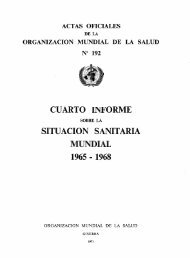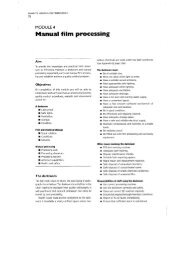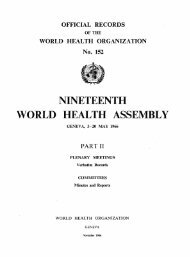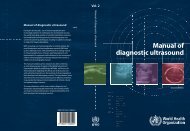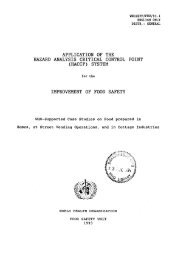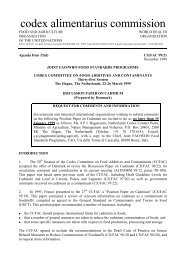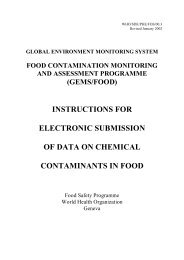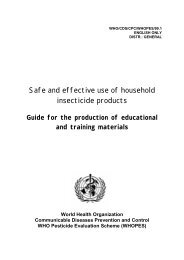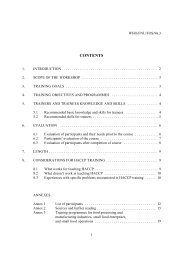IPV BSL-3/polio containment guidelines (Feb 2003) - World Health ...
IPV BSL-3/polio containment guidelines (Feb 2003) - World Health ...
IPV BSL-3/polio containment guidelines (Feb 2003) - World Health ...
Create successful ePaper yourself
Turn your PDF publications into a flip-book with our unique Google optimized e-Paper software.
levels for circulating neutralizing antibody titres against all three serotypes should<br />
have been verified. Test results should be no older than two years. Titre results on<br />
staff should be kept indefinitely. To insure adequate mucosal immunity and reduce<br />
the likelihood of faecal shedding, companies or their National Regulatory<br />
Authorities should consider immunizing personnel with oral <strong>polio</strong> vaccine (OPV)<br />
alone or in addition to inactivated <strong>polio</strong> vaccine (<strong>IPV</strong>).<br />
3.6 After any major spill or accident where there is reason to believe that the personnel<br />
may have been infected with <strong>polio</strong>virus, national authorities should be notified and<br />
the appropriate emergency <strong>containment</strong> and monitoring procedures initiated.<br />
Diagnostic examinations of personnel should be carried out to determine whether<br />
they are shedding <strong>polio</strong>virus in their faeces. If <strong>polio</strong>virus is being shed in faeces,<br />
appropriate measures as detailed in the facility <strong>guidelines</strong> for responding to<br />
biosafety emergencies and incidents shall be employed to avoid transmission of<br />
<strong>polio</strong>virus to other persons or to the public sewage system.<br />
4. PREMISES AND EQUIPMENT<br />
Premises should be designed in such a way as to control both the risk to the product and<br />
to the environment. This is accomplished by establishing a primary <strong>containment</strong> barrier,<br />
through appropriate safety equipment to protect the immediate workspace, and enclosing<br />
this system within a secondary <strong>containment</strong> barrier that protects the environment external<br />
to it from accidental exposure to infectious materials. These systems must provide<br />
12<br />
Adopted by the 53 rd meeting of the WHO Expert Committee on Biological Standardization, 17-21 <strong>Feb</strong>ruary <strong>2003</strong>. A definitive<br />
version of this document, which will differ from this version in editorial but not scientific detail, will be published in the WHO<br />
Technical Report Series.


